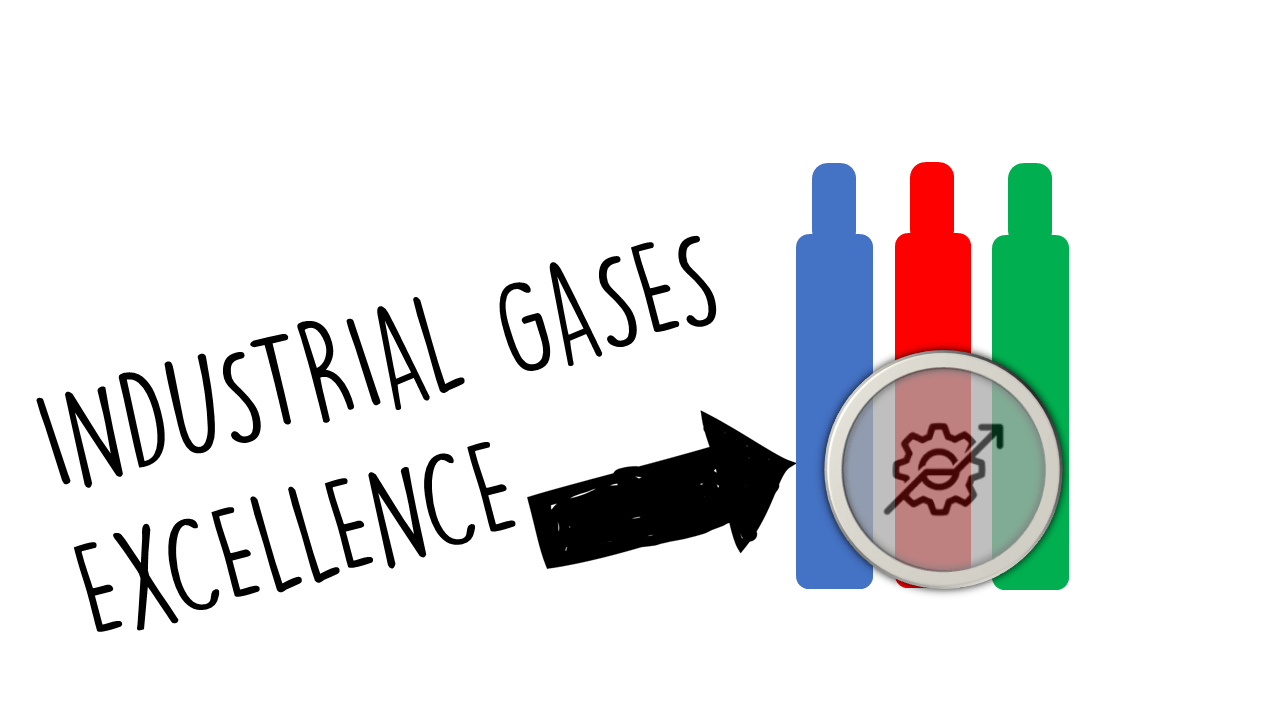The RapidKnowHow Process : Creating the Asset & Gas (AG) Business Model
Industrial Gas Leader : The Asset & Gas (AG) Model > Definition > Selling / Renting the “Asset” > Selling the “Gas” > Renting the Assets > Strategic Actions > Case Studies > Conclusion > Get Started in 3 Steps
Industrial Gas Leader: The Asset & Gas (AG) Model
Definition
The AG business model refers to a strategy where a company sells / rents a primary product (the “Asset”) at a low price or even at a loss, while the related consumable items (the “gases”) are sold at a higher margin. This model allows companies to establish a large customer base by making the initial purchase more accessible, with the goal of generating consistent revenue through ongoing sales of associated products.
Selling the “Asset”
In the context of the industrial gas sector, the “asset” could be a large gas storage system, such as tanks or gas delivery systems, sold at a competitive price. The key to effectively selling the “gas” involves:
- Value Proposition: Demonstrating the reliability, efficiency, and safety of the gas system.
- Financing Options: Offering flexible financing plans or leasing options to lower the initial investment for customers.
- Partnerships: Collaborating with industry players to enhance credibility and distribution.
Selling the “Gases”
The “gases” in this model represent the consumable products associated with gas systems, such as various gases (oxygen, nitrogen, argon) and maintenance services (monitoring, refills, inspections). Strategies for selling the “gases” include:
- Subscription Services: Providing gas supply contracts that ensure steady delivery and availability.
- Value-Added Services: Bundling services such as maintenance and monitoring with gas supplies to increase customer retention.
- Loyalty Programs: Creating incentives for customers to commit to long-term supply agreements.
Renting the Assets
An effective approach in the industrial gas market is to provide rental options for gas systems. This allows companies to expand their reach and market share by:
- Lowering Entry Barriers: Allowing customers to rent equipment instead of purchasing it outright reduces upfront costs.
- Flexibility: Providing options for scaling gas usage up or down based on business requirements.
- Maintenance and Support: Offering comprehensive support services for rented equipment, ensuring optimal performance.
Strategic Actions
Leading industrial gas companies can implement several strategic actions to capitalize on the Razor & Blade model:
- Market Segmentation: Identifying and targeting specific industries (healthcare, manufacturing, food and beverage) that require tailored solutions.
- Innovation: Investing in new technologies to enhance gas production efficiency and safety, attracting new customers.
- Sustainability: Developing eco-friendly gas solutions and demonstrating commitment to sustainability, appealing to environmentally conscious businesses.
Case Studies
- Air Liquide: Successfully employs the AG model by selling gas delivery systems and capturing continuous revenue through gas supplies in various industries.
- Linde Group: Family of brands under Linde effectively markets gas solutions while offering technical support and maintenance, generating multiple revenue streams from each customer.
Conclusion
The AG model presents a substantial opportunity for industrial gas leaders to build long-lasting relationships with customers by leveraging sales of both equipment and consumables. By focusing on value propositions, flexible options, and strong service offerings, companies can secure their position in the market.
Get Started in 3 Steps
- Identify Target Market: Conduct market research to understand industry needs and determine potential customer segments for gas solutions.
- Develop Offerings: Create enticing initial offers for gas systems and develop a comprehensive product and service line for ongoing sales.
- Build Partnerships and Support: Form strategic alliances with complementary industries and set up robust support systems for customers post-purchase to enhance satisfaction and retention.
By following these steps and capitalizing on the Asset & Gas (AG) model, your organization can effectively position itself as a leader in the industrial gas market.





